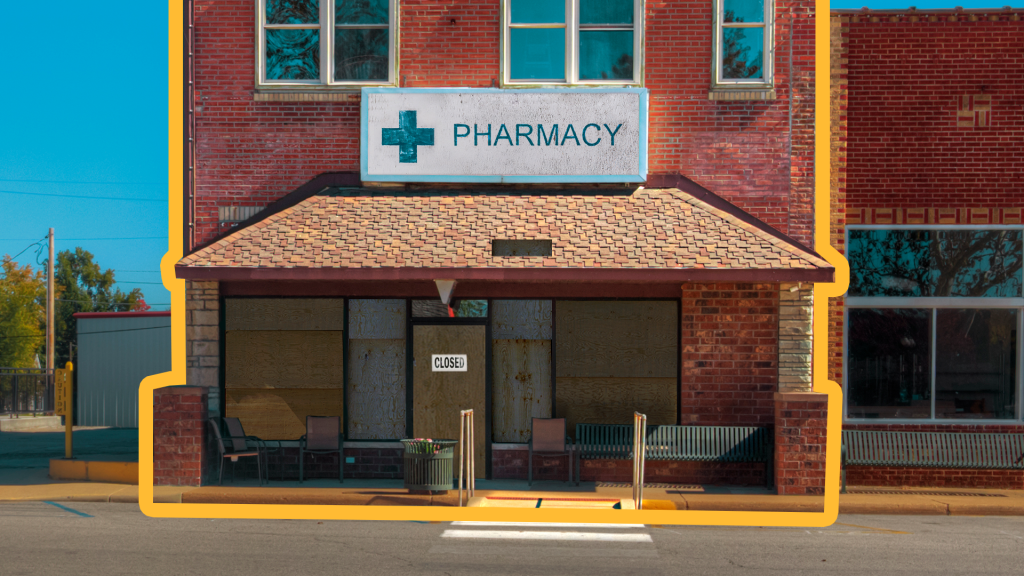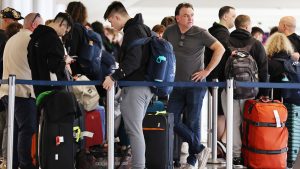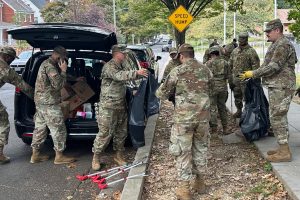The demise of American pharmacies: The impact of pharmacy deserts

An increasing number of Americans live in pharmacy deserts, which affects their access to one of the first lines of health care. The issue is exacerbated as independent pharmacies nationwide have closed their doors.
This is part three of a three-part series on struggles within American pharmacies and the impact it has on access to healthcare.
“Depending on where you live, it may still be pretty easy to find a pharmacy, but other places where you live, it’s becoming very difficult simply to get a prescription filled,” Douglas Hoey, CEO of the National Community Pharmacists Association, told Straight Arrow News. “We call those pharmacy deserts, and the pharmacy deserts in the United States are expanding, so more and more patients are finding it difficult to get that prescription filled.”
Independent pharmacies are disappearing across the country, former health insurance executive Wendell Potter said in an interview with SAN.
“They’ve vanished by the hundreds, and even some of the chain retail stores — CVS, Walgreens, Rite Aid — many of them are closing as well,” Potter said.
What is a pharmacy desert?
Nearly half of all counties in the U.S. have at least one “pharmacy desert,” according to research from the Ohio State University Comprehensive Cancer Center.
While there isn’t a universal definition of what constitutes a pharmacy desert, Ohio State researchers defined it as a 10-mile area that contains no retail pharmacy.
“You could have a pharmacy two miles away, which, for most people, that’s pretty close,” Hoey said. “But if you don’t have a vehicle or you don’t walk well (or) have difficulty walking two miles (it) might as well be 100 miles.”
U.S. Rep. Buddy Carter, a Republican from Georgia and pharmacist by trade, said if pharmacies keep closing, particularly in rural areas, accessibility to health care is going to suffer.
“Whether you’re Republican or Democrat or Independent, we all want the same thing,” Carter said. “We want accessible, affordable, quality health care.”
Impacts of pharmacy deserts
Pharmacy deserts are usually found in places with lower income and education levels, and where residents either don’t have health insurance or rely on public health insurance, according to Maxor National Pharmacy Services.
“These underserved neighborhoods frequently experience higher rates of chronic health conditions,” Maxor said in a December 2024 blog post.
Longer travel times to the pharmacy can contribute to a patient not adhering to their medical treatment plan, according to research published in U.S. Pharmacist. This can lead to poor health outcomes and increased medical care costs because of hospitalizations or trips to the emergency room, Noelle Kwan, an inpatient clinical pharmacist at Carle Foundation Hospital in Illinois, wrote in U.S. Pharmacist.
“Although there are programs to enhance affordability and accessibility, they are only available at certain pharmacies, threatening medication adherence,” Kwan said.
Saving American pharmacies
Roughly 1 in 3 pharmacies in the U.S. have closed since 2010, according to research from the University of Southern California and the University of California, Berkeley. Experts SAN spoke with said the solution to pharmacy woes goes back to part 2 of this series, pharmacy benefit managers, or PBMs.
“If we were able to do something about PBMs, they’re just going to make up for it somewhere else,” Carter said. “That’s why we’ve got to break these up, bust them up.”
Congress needs to take action with the two biggest programs in pharmacy: Medicare and Medicaid, Hoey said.
“The Medicare program, the Part D program, is run by the PBMs,” Hoey said. “The federal government turned over the program to the PBMs.”
As mentioned in part two of the series on the demise of American pharmacies, SAN covered how PBM reform was left out of the most recent spending bill. Now, states have taken up the cause.





